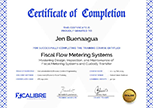| Date | Venue | Fee | |
|---|---|---|---|
| 15 Dec - 19 Dec 2025 | Dubai – UAE | $ 4,950 | Register Now |
| 02 Feb - 06 Feb 2026 | London - UK | $ 5,950 | Register Now |
| 13 Apr - 17 Apr 2026 | Dubai – UAE | $ 5,950 | Register Now |
| 27 Jul - 31 Jul 2026 | Dubai – UAE | $ 5,950 | Register Now |
| 14 Sep - 18 Sep 2026 | Chicago - USA | $ 6,950 | Register Now |
| 14 Dec - 18 Dec 2026 | Dubai – UAE | $ 5,950 | Register Now |
About the Course
This 5-day Applied Petrophysical Analysis training course will focus on the practical application of conventional and unconventional logging tools in addition to primary and intermediate levels of petrophysical evaluation. It will discuss the concept of reservoir characterisation and its benefits for the oil business, the theory behind different logging tools, acquisition and detailed workflow of essential formation evaluation. The workflow will include various methods for estimating shale volume using Gamma-ray different logging tools such as Gamma Ray (basic & spectral), Density, Neutron, Sonic, and Resistivity. It will discuss various methods of lithological interpretation using basic and advanced logging tools in integration with drilling cuttings and lab analysis.
This programme will deliberate different approaches for estimating porosity and permeability using basic logging tools such as Density, Neutron, and Sonic in addition to advanced logging tools such as nuclear magnetic resonance in integration with core data in case of availability. Different models of water saturation (Archie, Indonesia, etc.) will be discussed in addition to how to estimate saturation exponent and its significant effects on estimated water saturation.
Furthermore, the theory behind formation pressure logging tools and how to determine the fluid contacts. The cutoff parameters and their significant impact on STOOIP calculation will also be discussed. Also, it will examine the basic theory behind the ELAN approach with a practical session on software.
Core Objectives
The delegates will achieve the following objectives:
- Understand the aspects of applied petrophysical evaluation
- Familiarised with different logging tools in the oil market
- Know how to select the best tools relevant to other reservoirs
- Know the porosity & permeability models and their impact on reserve and production
- Learn the workflow of the basic formation of fluid saturations and contacts
- Understand the concept of net reservoir and net pay
- Discuss the integration with other disciplines (Geology, Geophysics, Reservoir, and Petroleum Engineering)
- Know how to use the STOOIP Calculation and its significant impact on the economics of the oil industry
Training Approach
This training course will be conducted through classroom or virtual training in interactive and practical methods. There will be daily individual exercises, and everyone will get an opportunity to discuss their issues with the software or with the concept itself. There will be a PowerPoint Presentation to capture all notes and explain everything in detail, and a daily recap will be provided for maximum benefit for the delegates.
The Attendees
This training course is designed for anyone who wants to understand the theory behind magnetic resonance tools and their applications in formation evaluation.
Likewise, it will be valuable to the professionals but not limited to the following:
- Petrophysicist
- Geologists
- Reservoir Engineers
- Geophysicists
- Petroleum Engineers
- Team Leaders and Everyone involved in Reservoir Characterisation and Reservoir Development
Daily Discussion
DAY ONE: INTRODUCTION TO PETROPHYSICS AND CONVENTIONAL LOGGING TOOLS
- Introduction to Petrophysics and Rock Characterisation
- Porosity and Permeability: Definition and Types
- Defining the Clay Types
- Gamma Ray and Spectral Gamma Tools
- Porosity Logging Tools
- Resistivity Logging Tools
DAY TWO: SHALE VOLUME AND LITHOLOGY INTERPRETATION
- Spectroscopy Logging Tools: ECS “Schlumberger”, GEM “Halliburton”, and FLEX “Baker Hughes”
- Nuclear Magnetic Resonance Logging Tools
- Shale Volume Determination Using Different Tools
- Gamma Ray
- Density
- Neutron
- Sonic
- Resistivity
- NMR
- Spectroscopy
- Lithology Determination using Various Logging Tools in Integration with other Measurements
- Integrating the Logging Tools Outputs with Drilling Cuttings and Lab Analysis
DAY THREE: POROSITY, PERMEABILITY ESTIMATION
- Total/Effective Porosity Estimation and Calibration
- Permeability Estimation and Calibration
- Hydrocarbon Effects On Log Readings
- Introduction to Routine Core Analysis
- Rock Types/Flow Units Concept
DAY FOUR: FLUIDS SATURATION, CUTOFFS, AND STOOIP
- Fluid Contacts and Capillary Pressure
- Pressure Testing Tools
- Water Saturation Models
- Cutoff Concepts: Net Reservoir and Net Pay
- STOOIP Calculation
DAY FIVE: CASE STUDY
- Hands-on Software Application
- Practical Session for ELAN Evaluation
- Contextual Studies Indicating the Main Challenges of Petrophysical Analysis
Certificate Awarded
Upon successful completion of this training course, participants will be awarded a Certificate of Completion from XCalibre Training Centre, acknowledging their accomplishment. This certificate serves as a testament to their dedication to developing their skills and advancing their expertise in their respective fields.


